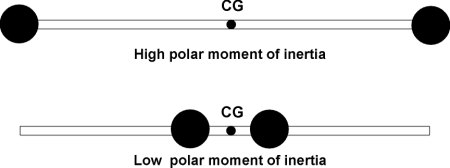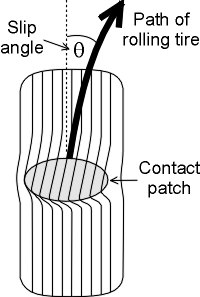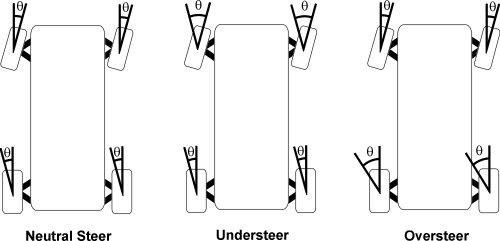
Wrong ! Most mid-engined sports cars have about 60% weight bias towards the rear, thanks to the engine, gearbox and differential are all located at the rear half of the car. In contrast, a well-sorted Porsche 924 has the engine in front and the transaxle at the rear, so it could actually achieve the perfect 50 / 50. Other good front-engined cars such as BMW 3-series and Honda S2000 also achieve 50 / 50, thanks to the lay-back engines.
The reason we prefer mid-engined cars is, instead of better balance, mid-engined cars have superior steering response. This is because they have lower polar moment of inertia. Considering the two system shown in below.

There is another advantage: since less effort is required to steer the car, we can reduce or even discard power steering, which always filter the feedback from the road thus downgrade the steering feel.
Dynamic Balance
Another reason we prefer mid-engined car is actually the slightly rear-biased weight distribution. In acceleration, we need more weight on the rear wheels to generate more traction for better launch. Obviously, FR cars are inferior in this respect. (FF cars, however, might be even better, but we shall see FF’s disadvantages later)
If acceleration is not much related to handling, braking must be very decisive. When braking into a corner, weight transfers from the rear to the front, hence actually creating unbalance to a car which achieves 50 / 50 in static condition. In contrast, a 40 / 60 mid-engined car may achieve a real dynamic balance under braking.
What is understeer ? Basically, if you turn the steering wheel and find the car steers less than you expect, the car is understeering. This is not because your subjective judgement goes wrong, in fact any car must have some degree of non-neutral steering due to the weight distribution, suspension design, tyre used, lateral acceleration and road conditions. Further more, a car could understeer in this corner and then oversteer in that corner. The whole picture is very complicated, so I'll spend more paragraphs to discuss this topic.
In fact, when running in straight line, we want a little bit understeer to make the car stable. When the car is subjected to side force, probably due to cross wind or the road's irregularities, understeer could resist the force and avoid the car to be steered automatically, therefore the driver need not to correct the steering frequently.
When the car is entering a corner, we also need a light understeer to provide the stability while the driver is easing off the brakes and building up cornering force. In mid corner, we need neutral steer. In the exit phase, a slight oversteer will be welcomed as it helps tightening the path. However, the degree of oversteer must be progressive and easily controllable by applying and easing throttle. We call this "Power Oversteer". Without power oversteer, we have to ease the throttle (thus loss time) or the car will run out of the corner.
However, I must make clear that what I say "slight understeer / oversteer" is usually deemed to be "near neutral steer" by most car magazines. This is because in reality there are too many cars running on severe understeer thus they used to them. In other words, if a car magazine said the Porsche 996 has mild understeer, it probably equals to "medium understeer" in our sense.
When a car enters a corner, all the tyres are turned with respect to the ground. Due to the elasticity of the pneumatic tyre, the tread in the contact patch will resist the turning action because there is friction generated between the rubber and the road surface. As a result, the treads on the contact patch will be distorted, whose direction always lags behind the direction of the wheel ( See figure in below ). We call the angular difference between the treads and the wheel's direction as Slip Angle.

Now you must think the existence of slip angle must reduce the car's steering angle thus leads to understeer. In fact, it is not so if everything else are perfect. Because both the front and rear tyres have more or less the same slip angles, they counter each other thus the resulting steering angle remains unaltered.
However, if the front
and
rear wheels have different slip angles, then we get understeer and
oversteer
:
Oversteer : Front Slip Angle < Rear Slip Angle
Neutral steer : Front Slip Angle = Rear Slip Angle
